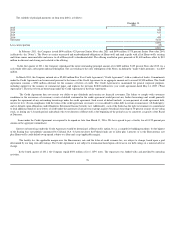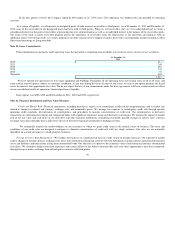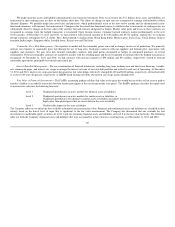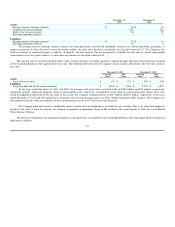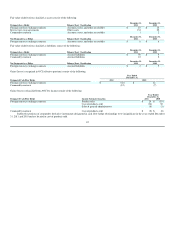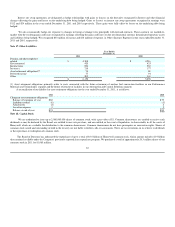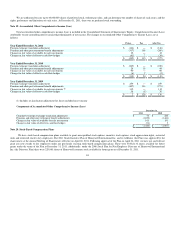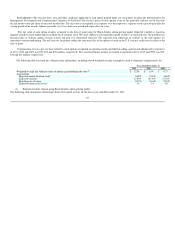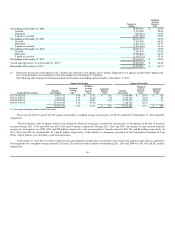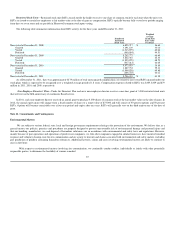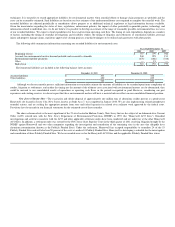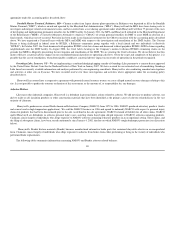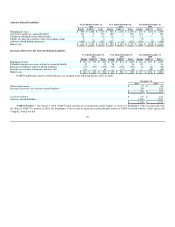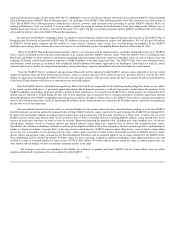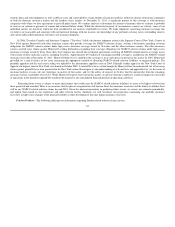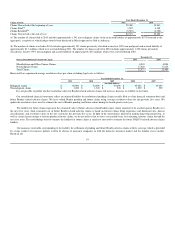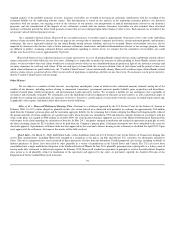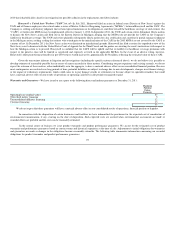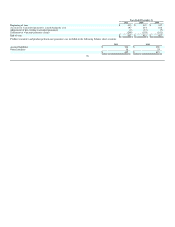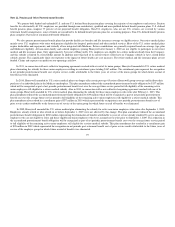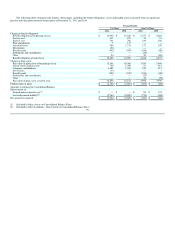Honeywell 2011 Annual Report Download - page 91
Download and view the complete annual report
Please find page 91 of the 2011 Honeywell annual report below. You can navigate through the pages in the report by either clicking on the pages listed below, or by using the keyword search tool below to find specific information within the annual report.
techniques. It is our policy to record appropriate liabilities for environmental matters when remedial efforts or damage claim payments are probable and the
costs can be reasonably estimated. Such liabilities are based on our best estimate of the undiscounted future costs required to complete the remedial work. The
recorded liabilities are adjusted periodically as remediation efforts progress or as additional technical, regulatory or legal information becomes available.
Given the uncertainties regarding the status of laws, regulations, enforcement policies, the impact of other potentially responsible parties, technology and
information related to individual sites, we do not believe it is possible to develop an estimate of the range of reasonably possible environmental loss in excess
of our recorded liabilities. We expect to fund expenditures for these matters from operating cash flow. The timing of cash expenditures depends on a number
of factors, including the timing of remedial investigations and feasibility studies, the timing of litigation and settlements of remediation liability, personal
injury and property damage claims, regulatory approval of cleanup projects, remedial techniques to be utilized and agreements with other parties.
The following table summarizes information concerning our recorded liabilities for environmental costs:
Years Ended December 31,
2011 2010 2009
Beginning of year $ 753 $ 779 $ 946
Accruals for environmental matters deemed probable and reasonably estimable 240 225 151
Environmental liability payments (270) (266) (318)
Other — 15 —
End of year $ 723 $ 753 $ 779
Environmental liabilities are included in the following balance sheet accounts:
December 31, 2011 December 31, 2010
Accrued liabilities $ 303 $ 328
Other liabilities 420 425
$ 723 $ 753
Although we do not currently possess sufficient information to reasonably estimate the amounts of liabilities to be recorded upon future completion of
studies, litigation or settlements, and neither the timing nor the amount of the ultimate costs associated with environmental matters can be determined, they
could be material to our consolidated results of operations or operating cash flows in the periods recognized or paid. However, considering our past
experience and existing reserves, we do not expect that these environmental matters will have a material adverse effect on our consolidated financial position.
New Jersey Chrome Sites—The excavation and offsite disposal of approximately one million tons of chromium residue present at a predecessor
Honeywell site located in Jersey City, New Jersey, known as Study Area 7, was completed in January 2010. We are also implementing related groundwater
remedial actions, and are seeking the appropriate permits from state and federal agencies for related river sediment work approved by the federal court.
Provisions have been made in our financial statements for the estimated cost of these remedies.
The above-referenced site is the most significant of the 21 sites located in Hudson County, New Jersey that are the subject of an Administrative Consent
Order (ACO) entered into with the New Jersey Department of Environmental Protection (NJDEP) in 1993 (the "Honeywell ACO Sites"). Remedial
investigations and activities consistent with the ACO and other applicable settlement orders have been conducted and are underway at the other Honeywell
ACO Sites. In addition, a settlement order was entered by the New Jersey State Superior Court in the third quarter of 2011 resolving litigation brought by the
NJDEP against Honeywell and two other companies regarding the investigation and remediation of the remaining sites in the area that allegedly have
chromium contamination (known as the Publicly Funded Sites). Under the settlement, Honeywell has accepted responsibility to remediate 24 of the 53
Publicly Funded Sites and will also bear 50 percent of the costs at another 10 Publicly Funded Sites. Honeywell is developing a schedule for the investigation
and remediation of these Publicly Funded Sites. We have recorded reserves for the Honeywell ACO Sites and the applicable Publicly Funded Sites where
88


